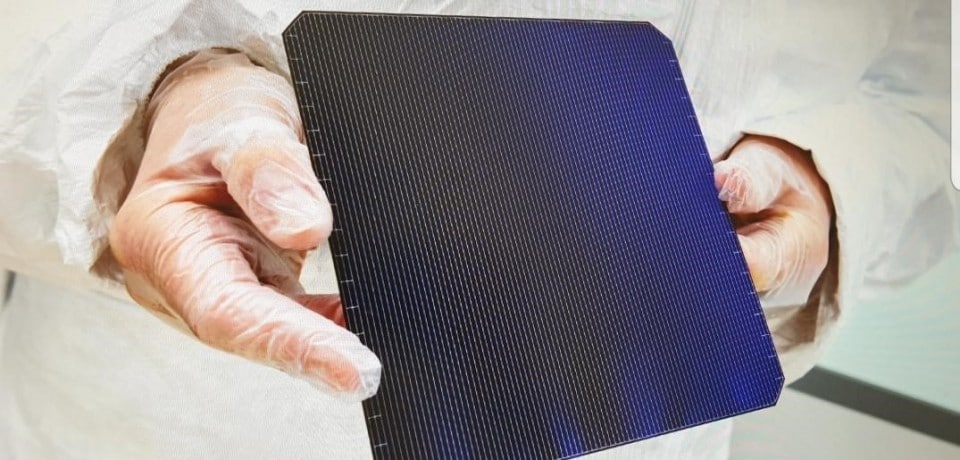From pv magazine’s global site
The National Solar Energy Institute (INES) arm of the French Alternative Energies and Atomic Energy Commission claims to have achieved a 24.63% conversion efficiency for a heterojunction solar cell based on a standard M2 wafer.
The feat was achieved in collaboration with the Enel Green Power renewable energy business of Italian state-owned power company and gas distributor Enel.
“The result was confirmed by the German Institute for Solar Energy Research in Hamelin,” a spokesperson for Enel told pv magazine.
The Italian company said the bifacial cell’s front-side efficiency was raised by around 0.7% using an improved busbar-free screen printing metallization based on heterojunction processes developed by Enel and INES, using manufacturing equipment provided by Swiss specialist Meyer Burger.
No busbars
Enel said the increase in efficiency was made possible by combining busbar-less technology, which enables more light to fall onto the cell surface, and a treatment developed by INES and Enel which further improved cell passivation. “The process also requires less silver and is becoming cheaper,” the spokesperson said.
He added, modules based on the cell technology with 23% efficiency are being manufactured at Enel’s solar module factory in Catania, Sicily. “Our plan is to reach an average 24% efficiency in production in 2021 and this week’s new achievement is paving the way for this target to be reached,” he said.
Enel Green Power started production of heterojunction modules at its 3Sun module factory in Catania in October. The 200 MW facility manufactures bifacial solar panels with an output of up to 400 W and efficiency of more than 20.5%.
In December, the new energy technologies and nanomaterials branch of the French Alternative Energies and Atomic Energy Commission said it had achieved 24.25% peak efficiency for a silicon heterojunction solar cell. In August, troubled Chinese manufacturer Hanergy set a new efficiency record for a silicon heterojunction module at 24.85%, edging out the previous record of 24.5% held by Kaneka. The Japanese company still holds the record for heterojunction cell efficiency, at 26.7% on a slightly smaller device.
This content is protected by copyright and may not be reused. If you want to cooperate with us and would like to reuse some of our content, please contact: editors@pv-magazine.com.









By submitting this form you agree to pv magazine using your data for the purposes of publishing your comment.
Your personal data will only be disclosed or otherwise transmitted to third parties for the purposes of spam filtering or if this is necessary for technical maintenance of the website. Any other transfer to third parties will not take place unless this is justified on the basis of applicable data protection regulations or if pv magazine is legally obliged to do so.
You may revoke this consent at any time with effect for the future, in which case your personal data will be deleted immediately. Otherwise, your data will be deleted if pv magazine has processed your request or the purpose of data storage is fulfilled.
Further information on data privacy can be found in our Data Protection Policy.